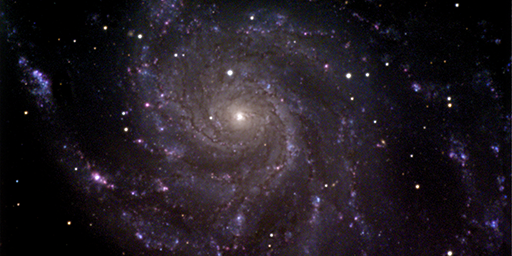|
Documents and links useful to Mees observers
|
 |
For in-person observers: current edition of the telescope startup/shutdown
cookbook.
|

|
The Mees Observatory Wiki, where one will find
the online logbooks and most of the documentation for telescope and
instruments.
|
 |
For those conducting socially-distanced
observing from their living room: current edition of the remote
observing startup/shutdown cookbook.
|

|
Astronomy 244/444, the Advanced Astrophysics
Laboratory, where one can learn the details of observing, data
reduction, and analysis.
|
 |
ClearDarkSky astronomical weather forecast for Mees, courtesy of Attilla Danko, Allan Rayhill, and the CMC.
|

|
Current conditions at Mees, from the onsite weather station as posted continuously to Weather Underground.
|
Some presentable data taken at Mees --
click for full-size version. Images are
LRGB color unless otherwise indicated.
|
 |
 |
 |
 |
 |
 |
 |
| M 101 |
M 51 |
M 109 |
NGC 5985/
5982 |
NGC 7331 |
NGC 2685 |
NGC 5866 |


 |
M 95, a Milky-Way-like barred
spiral galaxy about 30 million light years away.
Left: LRGB.
Center: LRGB + Ha,
to emphasize H II regions in M 95's disk. Right: montage ot
M 95's nucleus in R, G, B, and Ha,
to show (in Ha) its surrounding ring
of H II regions.
Nesli Erez's data
from ASTR 444, Spring 2021.
|
 |
 |
 |
 |
 |
 |
 |
| B 335 |
M 42/M 43, LRHaGB |
M 42/M 43,
L-[S II]-Ha-[O
III] |
NGC 7538 |
NGC 7635 |
M 27, LRHaGB |
M 1 |
|
Exoplanets
Transit-lightcurve detections of
exoplanets, with characterization of their dimensions and those of their
their orbits, by students in UR astrophysics classes.
All these
planets are
hot Jupiters.
|
 |
 |
 |
 |
 |
| WASP-10 b |
Qatar-1 b |
TOI-2046 b |
Qatar-4 b |
TOI-4012 b |


 |
M 15, a globular stellar
cluster in our Milky Way Galaxy, 33,000 light years away.
Left: true color image. Center:
blinking images of cluster center taken 1.5 hours apart, and with color
saturation increased, the better to reveal a few dozen
periodically-variable stars. Right: color-magnitude
diagram with markers for variable stars: 34 RR Lyr stars (+),
two SX Phe stars (+), one W Vir star (+),
and a 13 Gyr isochrone (...).
|
Mees Observatory computer desktop
wallpaper
|

























